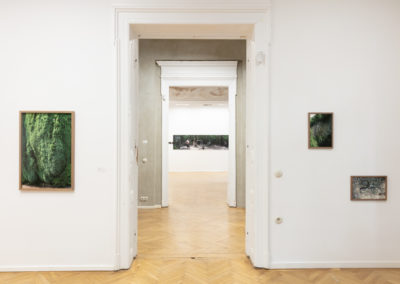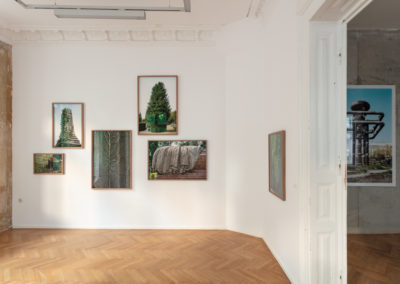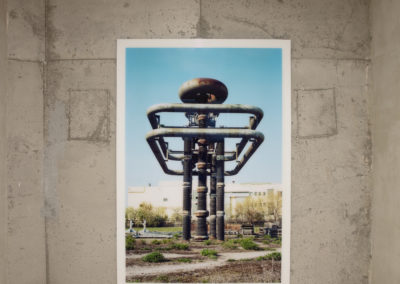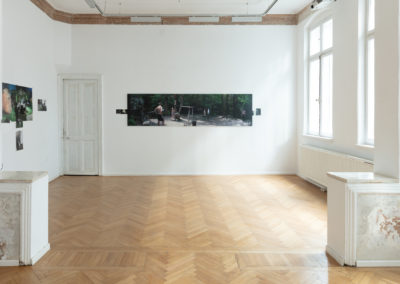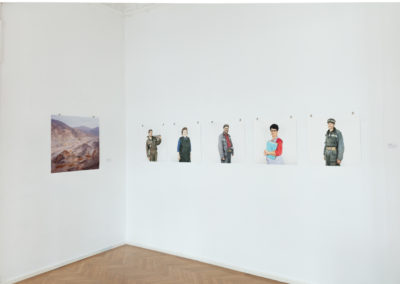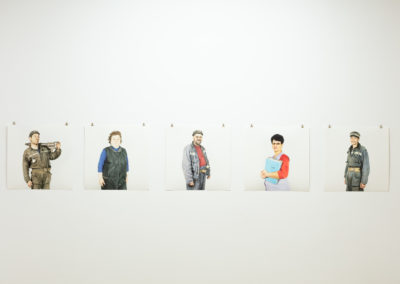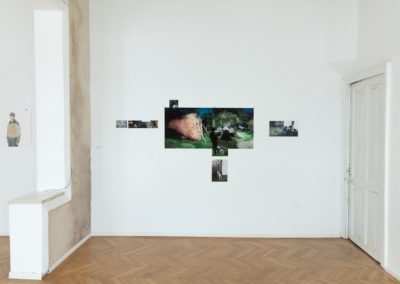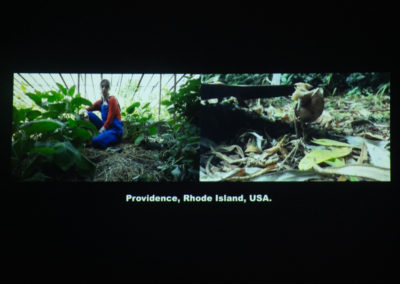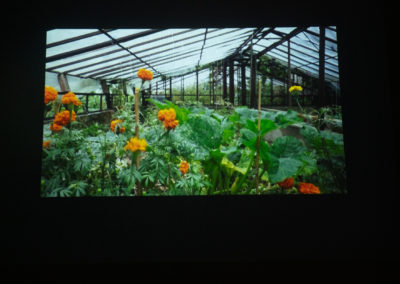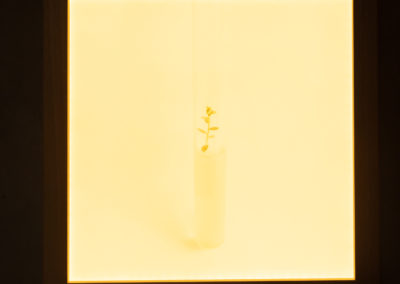Matei Bejenaru is a visual artist who lives and works in Iaşi, where he teaches photography and video art at the “George Enescu” University of Arts. In his projects, through photography, video, performance and inter-media installations, he analyzes how the ways of economic production, technological knowledge, mentalities and lifestyles have changed in the last two decades in the post-communist countries. The Romanian workers’ immigration towards the West was analyzed in his artistic projects Travel Guide and Maersk Dubai, selected for various international exhibitions, like the ones in Tate Modern, Level 2 Gallery in London in 2007, The Taipei Biennial in 2008. His choral music experimental project, started in 2010, Songs for a Better Future, was presented at The Drawing Room and Tate Modern in London, Western Front la Vancouver, Kuenstlerhaus Buchsenhausen Innsbruck, Laakteater Haga. The most recent episode of this project, Ode of the Matter, was exhibited at The National Museum of Contemporary Museum in Bucharest and at the Art Encounters Biennial in Timişoara.
Ioana Cîrlig is a freelance documentary photographer based in Bucharest. She studied cinematography and worked as a photojournalist for several years before dedicating herself entirely to long-term personal projects. Her work focuses on the relationship between people and the environment in small towns and rural areas of Romania. In 2012, together with photographer Marin Raica, she started the project Post-Industrial Stories, a visual exploration of mining communities in Romania during the period of deindustrialization. This project has gained international recognition, winning awards at the Circulations Festival (Paris) in 2019, Lensculture Exposure Award (2nd place in 2014), Fotofilmic (2015, touring exhibition), Kuala Lumpur Photo Awards (2015), and was a finalist at the Inge Morath Awards (2013). The photographs have been exhibited in several major countries and cities, including the Venice Architecture Biennale (2014), Photo London (2015), and La Quatrieme Image in Paris (2017), among others. The photography album Post-Industrial Stories was released in 2015, and the project has been published in various magazines and publications, including Der Spiegel, The Guardian, and Internazionale Magazine. In 2016, together with other photographers, he co-founded the Center for Documentary Photography, an association dedicated to independent documentary photography projects in Romania and Moldova. Here he contributed to the development of numerous projects and supported the production of over 20 new documentary projects and the publication of several photo books. After three years of activity in the Center for Documentary Photography, in 2023, he expressed his desire to explore new directions outside of classic documentary photography. In 2017, she initiated the project Accept all Happiness From Me, which started as an exploration of rare plants in Romania’s wild flora and evolved into a multidisciplinary project that includes a podcast episode, essays published in Scena9 magazine and collaborations with other artists.Since 2018, she is the photo editor of Scena9 magazine. In 2019, he exhibited at the Circulations festival, winning the festival prize and a solo exhibition at Fisheye Gallery in Paris in 2021. In 2022, he exhibited in several countries, including France and the United States, as part of NATURE/FUTURE? with a series from the Accept all Happiness From Me project. She participates in the Reflexions 2.0 fine art photography masterclass from 2021 to 2024, where she develops the plant project under the guidance of renowned artists and curators. In 2023, the project Accept all Happiness From Me was presented at the Art Encounters – My Rhino is Not a Myth Biennial in Timisoara and was included in the Creative Europe forum in Paris. In 2024, he exhibited at the Breda Photo Biennale in the Netherlands, and in the same year he became curator of the war photography exhibition FRONT, showcasing works by renowned photographers. Also in 2024, he co-founded FOC, an artist collective focused on environmental and activist projects.
Aurora Király is one of the best-known Romanian artists of her generation, exploring how the mind record, relives, remembers. The artist works with photography and installation in a variety of media, at the intersection of photography with textile art, drawing or installations. She is particularly interested in exploring feminist theories in relation with identity-making and the status of women in society. Her works relates to complex connections between events, public and private sphere of experience. During the 1990s and the 2000s, her projects explored the capacity of photography to record the quotidian, by combining auto-referential fragments with documentary aspects of day-to-day life (e.g. Melancholia, 1997 – 1999). The self-reflecting images have provided an interesting point of departure for further installations that included collage (Viewfinder 2014 – 2015 and Viewfinder Mock-ups, 2016 – ongoing), text (News Convertor, 2016 and News Remix, 2016 – 2017), textiles (Soft drawings, 2020), and even painting (Heroines, 2013 – 2015). Her most recent works question the sources or artistic inspiration depending on the context, the recent history as well as the references in art history of the status of women artists. Between 2001 – 2009 Aurora Király ran one of the most significant art-spaces for photography in Romania, Galeria Nouă and since 2007 she has been teaching at the department of Photography and Dynamic Image, at the Bucharest National University of Arts. Both roles have informed her artistic process focused on memory and the process of photography, actively supporting her peers and cultural workers in the emergent photography art scene in Romania through exhibitions, publications and artistic interventions.
Iosif Király is one of the most renowned artists working with photography in Romania. His work investigates the relationship between perception, time, synchronicity and memory through photography, installation-art, drawing and more recently, video. He has initiated, coordinated, and, together with architects, visual artists, and anthropologists, participated in research projects related to the changes having occurred in post-communist Romania: D-Platform, RO-Archive, Triaj, Tinseltown. During the 1980s, Iosif Király became active in the mail art network, an international underground movement established by Fluxus. After 1989, he exhibited both individually and within the subREAL* group. Iosif Király’s works are found in numerous private and public collections such as the following: The National Contemporary Art Museum in Bucharest, 2000+ Arteast Collection, Moderna galerija, Ljubljana*; Stedelijk Museum, Amsterdam; Light Work, Syracuse, NY; Hamburger Bahnhof – Museum für Gegenwart, Berlin; Neue Galerie Graz am Landsesmuseum Joanneum; Museum of Contemporary Art, Ars Aevi, Sarajevo*; Q Contemporary, Budapest*; The Benetton Collection; Emprise Bank, Wichita, KS; Fondazione Cassa di Risparmio di Modena; European Central Bank, Frankfurt; Hypo Bank, Frankfurt*. Since 1991 he has been teaching contemporary photography at the National University of Arts (UNArte) in Bucharest, Romania. In 1995, he was among the founders of the Department of Photography and Media Art at UNArte, where he is presently a professor. Since 2013 he has also been teaching in the Master of Visual Studies program at the National School of Political Science and Public Administration (SNSPA) in Bucharest.
Delia Popa is one of the most relevant contemporary Romanian artists of her generation. Her feminist art includes painting, drawing and prints, installation, video and performance, taking up important topics such as gender relations, power relations and the human-animal relationship. She is the co-founder and leader of ArtCrowd – Artists in Education, an arts organization committed since 2013 to creating positive change in society via art and education. POPA received a Master of Fine Arts in Painting and Drawing from the School of the Art Institute of Chicago, a Postgraduate Diploma in Fine Art from Goldsmiths College, University of London, and both a Master in Visual Arts and a Bachelor of Arts in Painting from The National University of Arts Bucharest. She also expanded her research into the field of Arts Management and obtained a Doctor in Philosphy in Arts Management from Lucian Blaga University in Sibiu, Romania. Her involvement with animal rights activism and her commitment to social justice have been informing her activity as an art educator, cultural mediator, as well as her studio practice. Her mediums include painting, drawing, installation and performance, as potential tools for social intervention. The choice of allegorical characters, as well as the drive to explore cross-disciplinary methods and various Western and Eastern modes of representation, testify to the unique blend of artistic, social, and diplomatic roles POPA is assuming in her work. She has been awarded numerous international residencies including artist in residence at Q21/MuseumsQuartier, Vienna, Austria (2018), index Freiraum, Zurich, Switzerland (2015), Bains Connective, Brussels, Belgium (2012), Romanian Cultural Institute in Venice, Italy (2010) and in Paris, France (2009). Delia POPA’s work has been shown in numerous national and international group exhibitions, screening and performance events, including at The National Museum of Contemporary Art/MNAC, Bucharest (2023/2020/2015/2013/2005), at The Station for Research on Art and Life/tranzit.ro, Ilfov and at the Toplocentrala, Sofia, Bulgaria (2022), at The Cologne Biennial, Germany (2022), at the Occupy Art Festival New York City, USA (2022), at Kunsthalle Bega, Timisoara, Romania (2021), at WASP Studios, Bucharest (2018), at Lateral ArtSpace, Paintbrush Factory, Cluj, Romania (2017/2016), at Advanced Performance and Scenography Studies/a.pass, Brussels, Belgium (2012), at General Public, Berlin, Germany (2011), at The 5th Video Art Biennial in Tel Aviv, Israel (2010), and at Selby Gallery, Ringling College of Art and Design, Sarasota, Florida, USA (2008). Her solo and duo exhibitions include “The Girl with Tentacles” at Sandwich Gallery, Bucharest (2017), “Chelen Amenca/Dance with Us” (with Ellen Rothenberg) at The National Bruckenthal Museum, Sibiu, Romania (2012), and “I am Gustav von Aschenbach” at The Romanian Cultural Institute in Venice, Italy (2010). Delia has lectured widely on topics such as collaboration, cultural mediation, art in education, language-through-art teaching methods, art history for children, art management, museum education, public art, contemporary art and her art practice at universities, museums and cultural institutions across Romania, as well as in cities such as Madrid, Venice, Vienna, Sarasota, Oslo and Chicago.
Ecology of the After Life
Artists: Matei Bejenaru, Ioana Cîrlig, Aurora Király, Iosif Király, Delia Popa
Curated by Rafaela Bîrlădeanu
09.05.-01.07.2024
ARAC, 26 Popa Soare Street, Bucharest
“I don’t know what ‘human nature’ is. Maybe leaving descriptions of what we wipe out is part of human nature.” – Ursula K. Le Guin, The Word for World Is Forest
Anca Poterasu Gallery presents Ecology of the Afterlife, an exhibition that revolves around recurrent and obsessive questions regarding human existence, science, nature’s resilience, and the echoes of our actions.
The exhibition serves as a metaphor for the regeneration of life as a whole, exploring not only human existence but also the intricate connections between organisms that sustain life on Earth. From Aurora Király’s landscapes to Delia Popa’s introspective reflections, Iosif Király’s blurring of reality and fantasy, Ioana Cîrlig’s documentation of coal miners, and Matei Bejenaru’s chronicles of forgotten spaces, Ecology of the After Life contemplates the interconnectedness of living beings.
Aurora Király’s latest series of photographic views captures ethereal landscapes where time seems to stand still. The artist transports us to places where the limits between humanity and nature are blurred, inviting us to contemplate our role in the grand tapestry of life. Her photographs serve as a reminder of nature’s remarkable ability to adapt and thrive in the face of environmental challenges. In these tranquil scenes, we witness the timeless beauty of the Earth and the intricate network of life that sustains it.
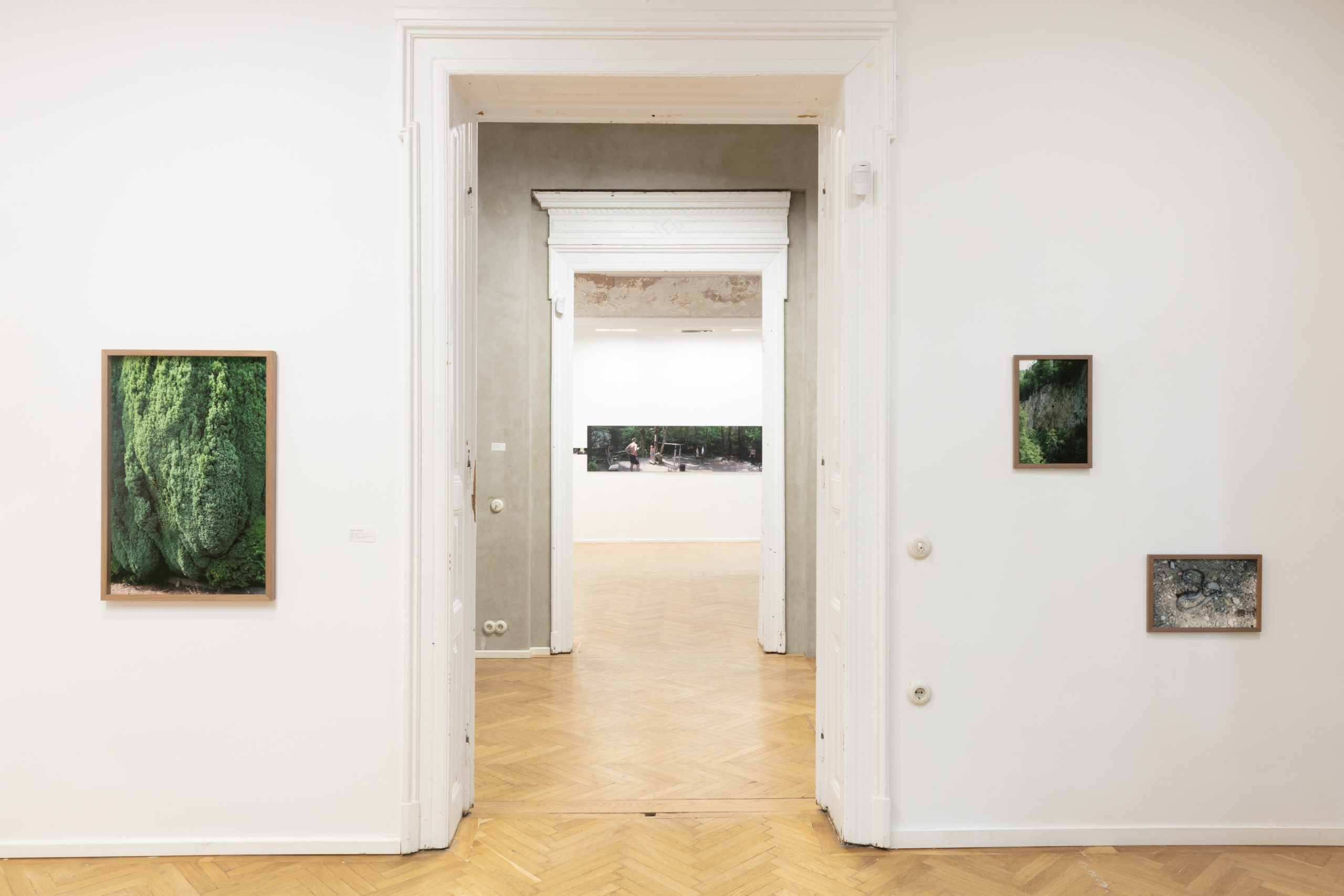
Delia Popa’s video work, Letters to a Young Gardener, initiates a conversation that highlights our deep connection to nature. Through her activities in the garden that once belonged to her grandparents and by recounting events in her life, the artist highlights nature’s healing role. She challenges viewers to reflect on the intricate layers of existence and the lasting impact of our actions.
Iosif Király’s complicates the negotiation between reality and fantasy, inviting viewers to meditate upon the fluidity of perception and the fine separation between past, present, and future, while the visual representation challenges us to reconsider our understanding of time and space.
Ioana Cirlig‘s portraits of miners at the Petrila coal mine in Romania shed light on the human impact on the environment. As one of the last working mines in Romania, the process of shutting down the activities in Petrila signifies not only the loss of jobs but also the end of a period. The closing of Petrila coal mine serves as a stark warning about the consequences of relying on non-renewable resources. It highlights the imperative for transition towards cleaner energy sources. Through this series of photographs, we witness the human cost of industrialization and the need for sustainable alternatives. The coal mines, with their towering structures and vast underground networks, symbolize humanity’s relentless pursuit of resources at any cost. Yet, in the aftermath of the closing out, what remains are scars on the landscape and communities left grappling with economic uncertainty and environmental degradation.
Matei Bejenaru’s Between Two Worlds is a poignant reminder of the impermanence inherent in human endeavour. With a keen eye for the melancholic beauty of abandoned spaces once dedicated to scientific exploration, the artist urges us to reflect on the ephemerality of our achievements and the legacy we leave behind. In his work, Bejenaru captures more than the physical decay of these places; he captures the essence of what they once represented. Through this careful visual narrative, he invites us to consider the inevitable passage of time and the impermanence of our existence.
The artists question the complexity of our world by dwelling into the interaction between humanity, the surrounding environment, science and the forces that shape our collective destiny. Ecology of the After Life invites the viewer to ponder on the cyclicality of life, the many shapes that the natural world can take, and our role in shaping the atmosphere around us.
ARAC is a non-profit organization founded in June 2012, in order to produce and promote contemporary art in Romania and abroad. The initiative of the 58 Plantelor Residency belongs to Anca Poterasu, gallerist and ARAC President. The first edition of the Residency took place in 2015 and it was financed through a grant offered by Norway, Iceland, Liechtenstein and the Romanian Government.

